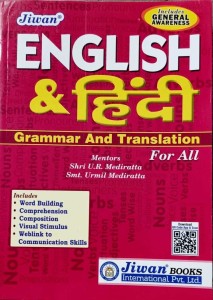

An item of Anglo-Indian English was known as an Anglo-Indianism from 1851. Other less common terms in use were Indo-Anglian (dating from 1897) and Indo-English (1912). In the colonial era, the most common terms in use were Anglo-Indian English, or simply Anglo-Indian, both dating from 1860. The first occurrence of the term Indian English dates from 1696, though the term did not become common until the 19th century.

As of 2018, the high courts of the Punjab and the Haryana were also awaiting presidential approval to use Hindi alongside English. However, as allowed by the Constitution, Hindi is also used in courts in Bihar, Madhya Pradesh, Uttar Pradesh, and Rajasthan by virtue of special presidential approval. Under the Indian Constitution, English is the language of India’s Supreme Court and of all the high courts of India. It is a bitter truth." In his book, In Search of Indian English: History, Politics and Indigenisation, Ranjan Kumar Auddy shows that the history of the rise of Indian nationalism and the history of the emergence of Indian English are deeply inter-related. The journalist Manu Joseph wrote in a The New York Times article that, due to the prominence and usage of the language and the desire for English-language education, "English is the de facto national language of India. Among Asian countries, Singapore, the Philippines, Malaysia, South Korea, Hong Kong, China and Macau received higher scores than India. India ranks 8th out of 24 Asian countries included in the index. The index gives the country a score of 496 indicating "low proficiency". India ranks 50 out of 100 countries in the 2021 EF English Proficiency Index published by the EF Education First. It concluded that approximately 83 million Indians (6.8%) reported English as their second language, and 46 million (3.8%) reported it as their third language, making English the second-most spoken language in India. 259,678 (0.02%) Indians spoke English as their first language. Īccording to the 2011 Census, 129 million (10.6%) Indians spoke English. The number of English-medium school students in India increased from over 15 million in 2008–09 to 29 million by 2013–14. According to statistics of District Information System for Education (DISE) of National University of Educational Planning and Administration under Ministry of Human Resource Development, Government of India, enrollment in English-medium schools increased by 50% between 2008––14. Among women, 83% (34,489) spoke no English, 17% (7,064) spoke at least some English, and 3% (1,246, roughly 17.6% of those who spoke at least some English) spoke English fluently. Īccording to the 2005 India Human Development Survey, of 41,554 surveyed, households reported that 72% of men (29,918) spoke no English, 28% of them (11,635) spoke at least some English, and 5% of them (2,077, roughly 17.9% of those who spoke at least some English) spoke fluent English. Of those, approximately 200,000 reported that it was their first language, 86 million reported that it was their second, and 39 million reported that it was their third. Īccording to the 2001 Census, 12.18% of Indians knew English at that time. Only a few hundred thousand Indians, or less than 0.1% of the total population, spoke English as their first language.



 0 kommentar(er)
0 kommentar(er)
